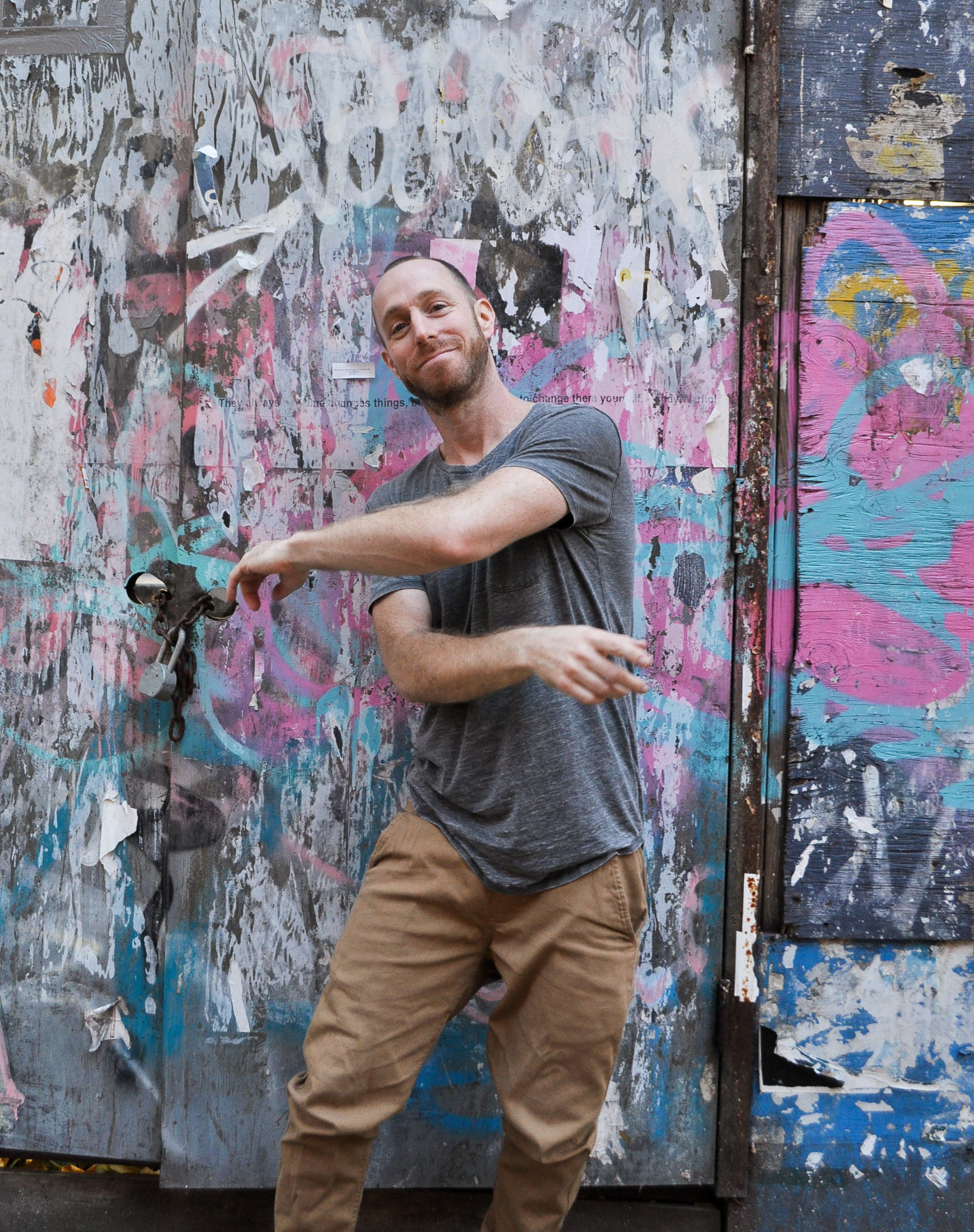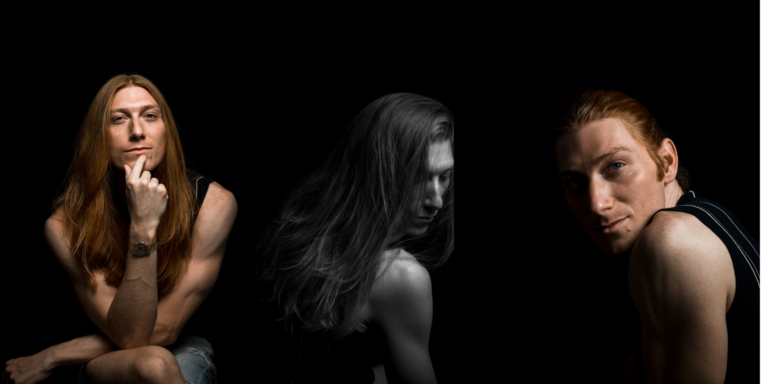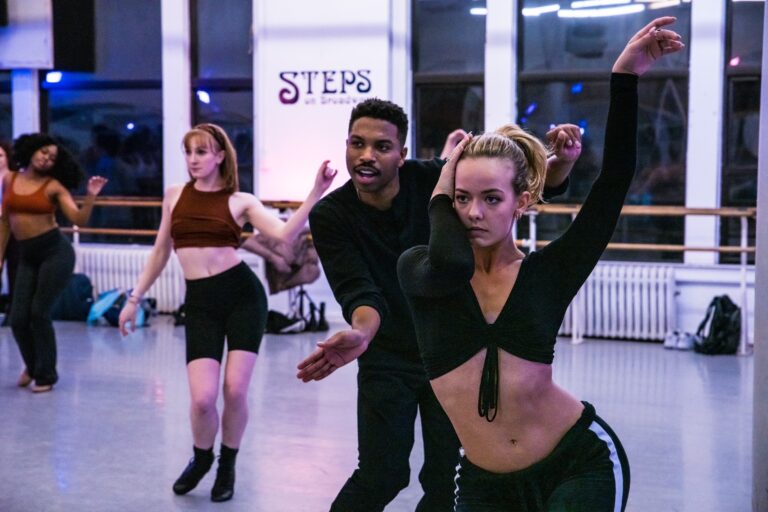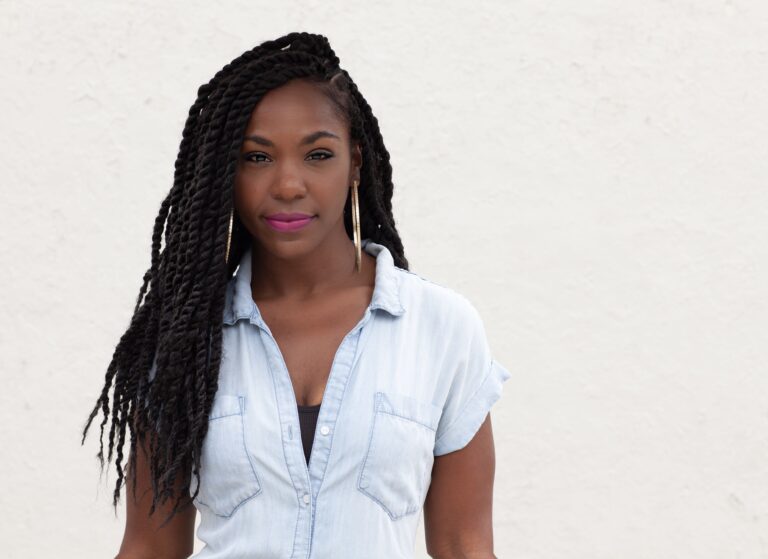
For Marc Kimelman, a New York City–based teacher and Broadway choreographer, music is both catalyst and catharsis: catalyst in that melody, lyrics and story are the driving factors behind his movement; catharsis in how he translates that movement–music connection to foster human connection, whether it’s in person or across computer screens.
Drawing from his background studying tai chi alongside dance, Kimelman’s movement style is airy, circular and undeniably groovy. One movement seamlessly transitions to the next like following a map, which Kimelman explains is an attribute that draws him to certain tracks.
“I like songs that take me on a journey,” he says. “When a song moves in an unpredictable way, it challenges me to play along with it, whether that’s with tempo, time signatures or energy building and falling.” For this reason, Kimelman tends to gravitate towards dance music and disco, R&B and soul music, as well as genre-bending artists like Jacob Collier and Amber Mark.
Kimelman’s choreographic approach, along with his music preferences, is far from one-size-fits-all. But if he has any rule of thumb, it’s to go with his gut and avoid second-guessing. A frequent club-goer, Kimelman loves watching people express themselves with no holds barred. “That kind of spontaneous reaction of bodies to music when someone hears a song and needs to get up and dance is what I live for,” he says. Kimelman often draws on that first-time feeling to jumpstart his choreographic process. “I like to record myself dancing to a song for the first time,” he says. “The first time you hear a track and move to it is really special and fleeting. Then I’ll look back on the recording, and maybe find a few moves that I like to build the piece from there.”
Just as Kimelman enjoys music that subverts expectations, he also loves challenging his students to make bold choices in their musicality. “I like to teach phrases of movement first, before anyone has heard the song,” he says. “I find sometimes people hear a song and get a certain idea of how they should dance to it, but sometimes I want to go against that. My intent is never for anyone to look the same, but to see how I can give everyone the same skeleton of movement and allow freedom to interpret it uniquely.” To encourage this musical consciousness, Kimelman always asks that students begin his combos with a bit of improv, “so I never see where their steps end and mine begin. The whole thing is truly their own.”

When COVID-19 shuttered studios across the world, Kimelman created a space for dancers to meet and move together virtually through his weekly Zoom gathering, Club Kimelman. “It’s incredible what happens when a lot of people listen to and connect with the same song at the same time. Our brain waves and heart rates align, and we rediscover how much we have in common,” he says. He loves when musicians are able to experience that connection as well, and will frequently reach out to the artists whose songs inspire his combos, with some of them, like Sammy Rae, even popping onto Club Kimelman to see the final product. “I love finding artists with raw, unfiltered talent who are up-and-coming, and starting a relationship with them,” he says. “There are all sorts of happy coincidences that happen when you take the time to research and learn about the backstories behind the artists and songs you love.”
Kimelman also uses his captivating music choices as a launch pad to dive into emotion and storytelling. “Someone recently called my class ‘emotional cardio,’ which I think is so accurate,” he says. “By the end, I want dancers to feel this big release, like they’ve truly connected with a song through their movement, and shared those feelings with everyone around them.”
It’s no wonder that Kimelman’s heart-first approach to choreography has led him to emotionally resonant projects, like associate choreographer for Broadway’s Jagged Little Pill, associate choreographer for Broadway’s A Bronx Tale, and assistant choreographer for Broadway’s Jesus Christ Superstar. And when it comes to collaborators, Kimelman seeks out dancers who operate in a similar vein.
“When I’m auditioning dancers, I can get a pretty clear idea of their personality through their musicality,” he says. “It reveals their vulnerability, their confidence, and how they make unique movement choices. It’s really special to be able to learn about people from the inside out.”
Ultimately, Kimelman feels he’s succeeded as a teacher when his students are able to channel his movement–music connections into authentic storytelling. “I like to tell dancers to dance with the music, not to the music. They should feel like the conductor, the rhythm, the beat,” he says. “That musicality coming from within is what turns dance into your personal superpower.”
Kimelman made us a playlist of songs he likes to use in class, and shared how his favorites uniquely inspire him:
“In the Image,” by Beverly Glenn-Copeland
“This track has everything I look for in a class song, in terms of its beautiful lyrics. For example, ‘Don’t let a little worry make you crazy. Don’t let a little heartbreak make you cold…get up and dance.’ This song reminds me that when things are good in life, we dance, and when things are tough in life, we dance, too. And then there’s this house beat in the back that goes through the whole track, and inspires a really funky vibe that is emotional and spiritual to its core.”
“Work,” by Charlotte Day Wilson
“Charlotte’s an amazing Canadian singer/songwriter, and to me, this song is about the world coming back, and the work and resilience that’s going to be required from all of us as we return. I love how the lyrics go against the melancholy orchestration. It has a lot of swagger to it, and also beauty, which makes me want to dance really long and big, but also stay grounded, and throw in hip-hop elements, as well.”

“Remember Where You Are,” by Jessie Ware
“Jessie Ware is probably my most-used artist in class. I love this track because it sounds like it could have been written in the ’50s or ’60s. It has this real vintage quality, but brought to 2021, and in theater that’s my favorite thing. It’s all about how we can take pieces from the past and bring them to audiences today. I also love the song’s message of, literally, remembering where you are and being present.”
“Pink Pony Club,” by Chappell Roan
“Being from theater, I love a story-driven song. This one is the classic story of feeling like you’re meant to be somewhere else, like growing up in a small town and maybe not feeling understood. Then, suddenly, you show up in this new place and are encouraged to be exactly who you are. A lot of people in the LGBTQ+ community can relate to that. I love how this track makes you want to be proud of yourself and find your own Pink Pony Club, where you can be as free as you want. Watching people dance to this and embody that message is always very special.”




